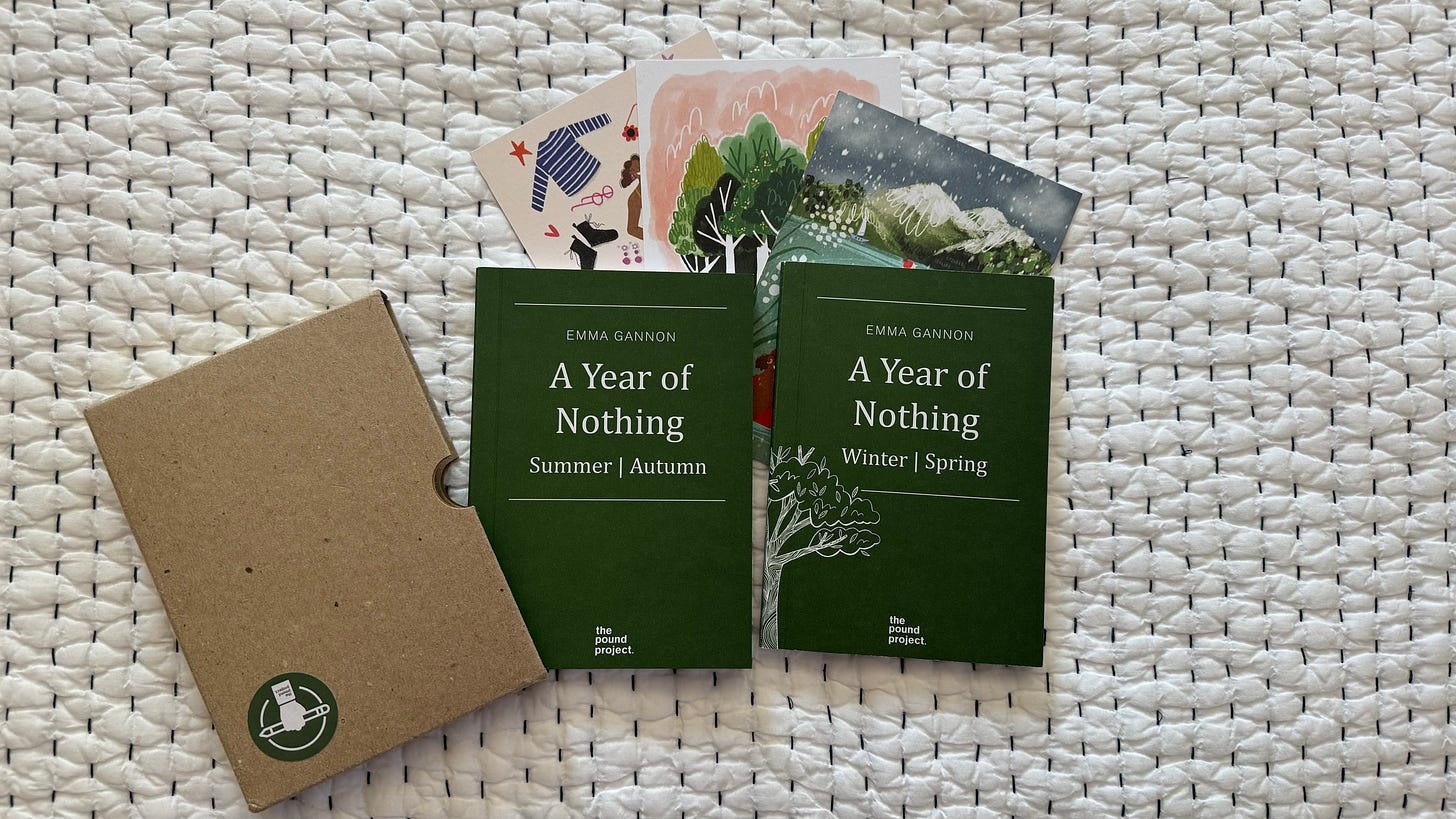I’ve been reading two little volumes called A Year of Nothing: Winter/Spring and A Year of Nothing: Summer/Autumn by
about her year of burnout. I love these books. I love their tiny size and the beautiful little folio they come in (kudos to The Pound Project) with greeting cards tucked in between. Emma is one of my favorite writers about creativity and life. She writes in such a flowy and honest way, with lots of little comma-less clauses that make her writing feel like a good friend telling you about the past year over coffee. Her words have gotten me thinking about my own periods of burnout and what I’ve learned from them about work and play. How it’s not so much about some magical balance between the two, but about making sure to work enough play into every day—just like for dogs and cats and kids.My biggest periods of burnout came in my years of doing tasks that were forced engagement instead of joyful engagement. Getting anywhere close to a courtroom or opposing legal counsel or a deposition room or a big set of legal documents is forced engagement for me. But writing and editing legal briefs is not. I realized early on in the law job I have now that I was often in a flow state. My life is in many ways no less busy than it was in my most draining work years. My law job is still demanding, and I’m fitting in a lot more creative work than I ever have, plus toddler raising and friend and family keeping up. And yet I’ve had two years without burnout. For me at least, burnout is not so much about the amount of work I’m doing, but about the amount of non-playful work I’m doing.
Vacation is often thrust at us as the answer to burnout. Take more vacation, the counter-message goes to the hard-working American dream. Look at Europe. But I’m not sure that living for vacation is the answer either. I tried that for years. I would be counting the days until the next trip, and my stomach would sink halfway through with anticipation about what awaited me on the other side. That’s stopped happening as much recently. When there’s enough that’s engaging in the day-to-day, vacation becomes a new flavor of icing—not a pressure-filled necessity.
The other thing I’m learning from Emma is that we can outgrow old forms of play, and when we do, we either find new ones or our body breaks down so we do. This is Emma’s story. Her work life, which started out as creative play, had become drained of that energy, and her body started demanding it elsewhere. This is so hard to recognize about our creative work especially—the place so many of us go for play. When and how can it turn on us, and how do we nurture it back when it does?
I’ve written here before about the seasonality of life and of creative work, including seasons of going the way of the bears in winter. Emma certainly did some hibernating in her year of burnout. But she also found her way to new sources of play. She changed up her wardrobe and started buying bright-colored rompers second-hand (I love this!). And she picked up a hobby for the first time—of swimming in really cold water.
Play finds a way, in other words. What if it’s not what we work for, but what we do our best to work with? And what if we give ourselves the grace of dogs and cats and kids, who get bored of one game and find themselves another?





Absolutely beautiful!! How do you nail it every time???? Your writing is always this perfect mix of humble, raw lightness and deep, philosophical magic. It’s soft and bold. It’s loving and confident. It’s so good. You, too, have such a good flow. You make it look easy!!
I hope Emma sees this. I follow her as well!! I adore her honesty and courage, and have been inspired by those small books and how she went about that. It’s cool to see her bounce between traditional and indie. She gives so many of us permission we didn’t know we had!!
Welp. Keep it up, friend!!